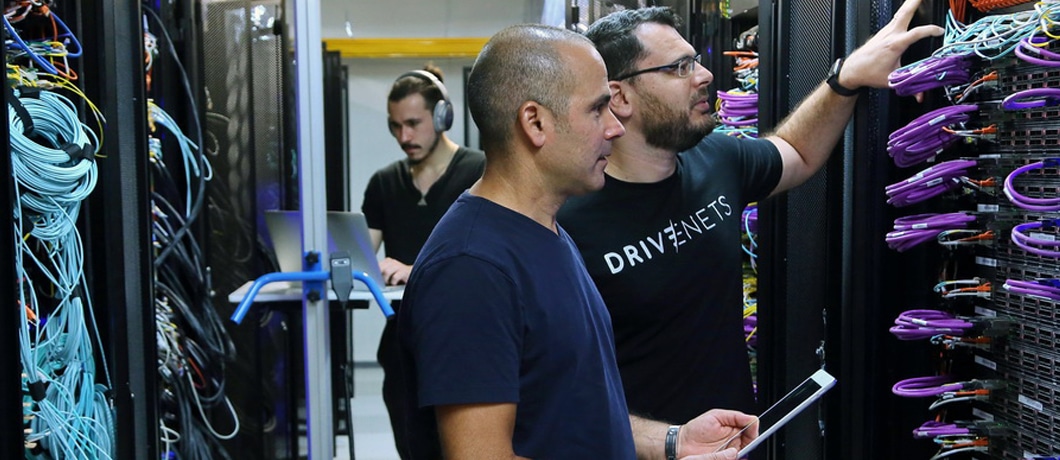A decade or so ago, the storage and compute market was in a similar situation. As demand grew, t so did cost and complexity. Then two major disruptions changed all that. First, VMware hypervisor technology virtualized the physical infrastructure and turned it into a unified shared resource, substantially improving their economics. Second, cloud providers disaggregated the data center’s hardware and software, turning the physical infrastructure into a shared resource for software-based services. They also adopted white boxes. All that made services more easily available, expanded their service offerings and lowered their cost per bit. A similar transformation is now happening in high-scale networking both for service providers and hyperscalers. The new networking model has simplified, opened and virtualized the physical infrastructure to become a shared resource running over standard networking white boxes. This new network architecture can scale with demand and run multiple networks and services over that single shared physical infrastructure, at much lower CapEx and OpEx. While the benefits are clear – cost savings, efficiency, operational simplicity, no vendor lock and scale, such a radical change to the network infrastructure can also be frightening. It creates a strong competitive pressure from incumbent routing vendors, questioning the model’s viability in order to protect their current business. Here are the most common concerns that come up to question the viability of the disaggregated router in general, and DriveNets Network Cloud specifically. Now let’s sort fact from fiction.
Myth #1: The solution sounds promising in theory, but we hear that it doesn’t work/scale.
The disaggregated solution is already working at the core of one of the largest Tier-1 service providers in the world. So there is no question about the viability or scale of the solution. DriveNets has implemented the Network Cloud solution based on a Distributed Disaggregated Chassis (DDC) model, that was contributed to the OCP by AT&T. DriveNets Network Cloud solution supports a router entity running on a single white box supporting 40 ports of 100Gbps or 10 ports supporting 400G (total of 4Tbps router). And it can scale a router to any number of white boxes up to a cluster of 192 boxes (768Tbps). In an industry first, DriveNets publicly demonstrated the Network Cloud solution with partners Credo and UFIspace at the virtual OCP summit in May 2020. The demo was the largest ever display of a DDC router. It supported 96 Tbps.Myth #2: Service providers see the promise of disaggregated white box routers, but they are concerned about the complexity of putting it all together.
Any open solution based on multiple vendor elements raises concerns regarding who has the responsibility for the solution. This is why DriveNets takes full responsibility for the Network Cloud solution – we manage, test and support it as if it came from a single vendor. We also made a great effort to automate a big part of the setup and management, reducing orchestration and management complexity. We have a trusted ecosystem of partners, that include leading system integrators, white box ODMs (Original Device Manufacturers), and optics and silicon vendors. We took on the responsibility to ensure that all the elements are tested as a solution and managed as a system. DNOR – DriveNets Orchestrator ensures the automation of the full solution life cycle – from setting up the white boxes to zero-touch provisioning of the cluster. And finally, the solution is deployed through a VAR just like it is done already with incumbent vendors.Myth #3: The market is shifting and traditional OEM vendors are also moving to a disaggregated model, why take a chance with DriveNets?
Incumbent router vendors have been saying that they are tracking disaggregation to gauge the demand for it and that they will be ready when their customers are. They also say that their NOS is already hardware-agnostic while their chassis are open to 3rd party software. In reality, they have no incentive to do so. Their business model is hardware-based and they make high-margins from the integrated solution. They can be flexible in their pricing models for sure – playing with hardware and software licensing or services, but bottom line they cannot deliver the same long-term benefits that disaggregation does – the cloud-software service scalability, the operational simplicity and the lower cost structure. The traditional software is outdated, written in a monolithic way and is still struggling to scale and to virtualize network functions. The new cloud-native software, distributed NOS and the separation of the control plane and data plane can scale the physical (shared) network infrastructure and the number of networks and services running on top of it, efficiently and independently.Myth #4: More boxes means more complexity vs. a single chassis solution
DriveNets has implemented the Network Cloud solution based on a Distributed Disaggregated Chassis (DDC) model, that was contributed to the OCP by AT&T. According to KGPCo, a leading telecom solution provider, the DDC solution delivers 50% reduction in time to deployment over traditional chassis. This includes the time required to design the disaggregated network, procurement and turn-up cycle. DriveNets Network Cloud also provides much greater automation and visibility into the provisioning of a routing cluster and through the life cycle of its hardware and software components. The greater transparency includes pre-production information. According to KGPCo, tracking of historical information incumbent routers have a typical 7% un-documented failure which complicates future planning, while the disaggregated model provides full transparency. We hear from our customers that in traditional routers ‘more is less’, they only use a small part of the router services and do not need the wide set of software features developed for SPs. These unnecessary capabilities may add additional failure points. However, the monolithic nature of the software on traditional router solutions requires them to use the full software stack and in many cases the issues operators are experiencing in their networks are due to software issues in parts of the software that they don’t really need. Cloud-native software and the use of software containers, like in the case of DriveNets Network Cloud can avoid these issues altogether.Myth #5: Disaggregated solutions sound like a router built by a committee, what happens when there is an issue? Who is responsible for solving it?
DriveNets supports the complete solution life cycle including hardware, firmware and networking software as simple as a traditional chassis, and provides the first line of support, completely coordinated with the supporting VARs and hardware vendors – just like traditional routers. The world is moving to open, interoperable solutions, which are designed to address this specific concern. DriveNets Network Cloud is a disaggregated high-scale network solution, which offers a new technology, a new architecture and a new operational model that is simpler and more efficient than what currently exists. The best way to really get real answers is to start testing network disaggregation with a specific use case, by running a Proof of Concept (PoC) with DriveNets. We know from our ecosystem and our customers that there is a market shift underway, reach out to us if you have questions and we will be happy to continue the conversation.eBook
Transforming Service Provider Networks with Disaggregation




